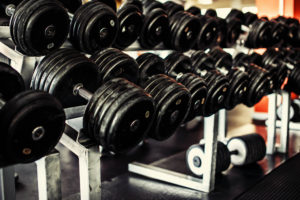Top Pick
- Top quality.
- Very comfortable.
- For men and women.
You don’t jog in boots, so why are you weightlifting in running shoes?
Wearing incorrect shoes can negatively impact your body. Weightlifting has the potential to force a lot of strain onto your feet, so appropriate footwear is a must.
Here are the best weightlifting shoes for you, and all you need to know about them. Below, I’ll expand on the pros and cons of each one in detail.
The Best Weightlifting Shoes for Serious Lifters and bodybuilders
These are our favorite weightlifting shoes, but remember that they’re shoes, and only you can determine which will be good for you.
1. Otomix Stingray Escape
Otomix Stingrays are made for a number of sports, including MMA, jujitsu, boxing, wrestling, and of course, weightlifting. They’re made of durable (but light) polyester and synthetic leather.
These stylish shoes come in a range of colors and sizes and are suitable for everyone. They’re gender neutral, so it’s a plus that these can be considered one of the best women’s weightlifting shoes.
- Pros
- High-quality materials.
- Comfortable.
- Versatile and good for many sports.
- Available in a wide range of designs.
- Made for both men and women.
- Cons
- Although the shoe itself is strong, they eyelets are flimsy and tear easily.
- Sizing is inaccurate.
2. Inov-8 Women's Fastlift 335 Weight-Lifting Shoe
This snug-fitting shoe is widely considered the best women’s weightlifting shoe of them all. Its platform is 1.25 inches, and many claim it’s the perfect height. Made from synthetic materials, it’s got adjustable straps, mesh lining, and extra grip.
As well as the bright pink, it’s also available in black if you prefer to wear less intense colors.
- Pros
- Flexible and sturdy.
- Excellent height.
- Lightweight.
- Cons
- Laces come undone easily (which is hazardous during sessions).
- Can be slightly uncomfortable.
3. Nordic Lifting Powerlifting Shoes
This men’s shoe is specifically designed for heavy weightlifting and high-intensity sessions. They’ve got 1.4 inches of height, an anti-slip sole, and do an excellent job of keeping your feet safely in place to lessen the risk of injury.
With reinforced stitching, they’re extra durable and capable of withstanding the extra pressure that comes with heavy weights.
- Pros
- Designed especially for heavy weightlifting.
- Reinforced and extra durable.
- Good height.
- Comfortable.
- Cons
- Not designed for deadlifts.
- Too heavy duty for light weights or infrequent use.
- They’re narrower than they appear.
4. Nike Men's Romaleos 3 Weightlifting Shoes
Nike has been a forerunner in athletic gear (particularly footwear) for decades. It’s a recognizable brand with an impressive portfolio, and these shoes are no exception to Nike’s quality.
These weightlifting shoes are made of synthetic fabrics, with anti-slip rubber soles and reinforced, breathable mesh. They’ve got honeycomb TPU for extra stability, interchangeable insoles, and nylon straps.
- Pros
- Excellent comfort.
- Give good support.
- True to size.
- Adjustable insoles.
- Versatile.
- Cons
- The shoes are flimsy.
- Tight around the toes.
5. Adidas Men’s Powerlift 3.1
As with Nike, the Adidas powerlift is a recognizable shoe from a respected and reputable brand. It’s durable and snug.
They’re made from synthetics and are lightweight and breathable. These shoes are worth the investment, as they’re built to last.
- Pros
- Stable and heavy duty.
- Fit comfortably.
- Give impressive support.
- Cons
- Narrow and won’t fit well on wide feet.
- They’re limited in their use.
6. Adidas Men’s Combat Speed
Another one from Adidas, this shoe differs from the former in that it’s a more affordable (and no doubt lower quality) deal. Still, it’s Adidas, and this is still a great shoe.
It’s got rubber soles for anti-slippage, and it’s made mostly of breathable (though slightly unsightly) mesh. It’s a flexible and supportive shoe that offers good stability in weight training. A range of fun colors are available, to suit all tastes.
- Pros
- It’s a budget-friendly, but branded option.
- Durable.
- Cons
- Straps are a little flimsy.
- These shoes are really tight.
7. Puma Women’s Tazon 6
Here we have another unquestionably trusted brand, only this time it’s for the ladies. These are good shoes—certainly among the best women’s weightlifting shoes.
They’re made from 100 percent synthetic leather, have anti-slip rubber soles and a TPU shank for extra stability.
- Pros
- Versatile shoes that don’t look like weightlifting shoes.
- High quality materials.
- Trusted brand.
- Comfortable.
- Cons
- Shoes need to be broken in.
- Narrow.
- Not breathable, feet can get quite hot.
8. NOBULL Women's Training Shoes
Another one of the best women’s weightlifting shoes, Nobull has a versatile shoe that could be used for almost anything; running, CrossFit, and lifting included.
This breathable shoe is made from durable SuperFabric and mesh. Since it’s designed for all purposes, it suits most environments too. It’s a highly protective shoe.
- Pros
- Versatile, all-purpose shoes.
- Comfortable.
- Lightweight and breathable.
- Cons
- Smaller and narrower than other shoes of the same size.
- Quality is questionable.
- They’re stiff and can cause discomfort if worn for extended time periods.
9. Adidas Women’s Powerlift 3
Just like the men’s version, this shoe is breathable, strong, and comfortable.
It’s of the same quality as the men’s and made from synthetic materials. It’s not quite as heavyweight as the men’s, but it’s still durable and built to last. These are available in half sizes so you can get the perfect fit.
- Pros
- Sturdy.
- Comfortable.
- Breathable.
- Reasonably affordable.
- Cons
- Not as heavy duty as the men’s.
- Not as flexible or versatile as other shoes.
- Fairly new to the market, so not much information is available.
A Buying guide to Weightlifting Shoes
Wearing specialized footwear for exercise lessens or eliminates the risk of injury and discomfort.
Think about it. Shoes protect your feet from heat, cold, dirt, small bits like gravel, glass, or other things that can pierce your feet, and more. They also prevent strain… if you wear them properly.
Good fitness shoes act as shock absorbers, and take pressure off your ankles, reducing the chance of pain and injury. But, a runner has different needs to, say, a dancer—who needs different shoes to a weightlifter.
Weightlifting puts an immense amount of pressure on your feet, and not just any shoe will do to combat that.
How Are Weightlifting Shoes different?
Olympic weightlifting shoes (also known as Oly shoes) might look odd, but they serve an important purpose. They have hard, flat soles and raised heels, and they’re engineered to closely fit your foot. They’re also meant to improve your ankle’s placement for squats—an important part of weightlifting.
The hard soles give you more force in your squats, snatch, and jerk. The raised heel improves the depth, posture, and stability of your squats.
Do You Need Weightlifting Shoes?
Weightlifting shoes are necessary if you do serious, regular, or intense weightlifting. Even if those three things don’t apply to you, you can still benefit from them.
Advantages of Weightlifting Shoes
- You get more stability and support.
- Weightlifting shoes improve your posture.
- Your balance is corrected.
- They lessen the risk of straining your ankles.
- You’ll have a healthier range of motion for your joints.
- Your weightlifting stance will be better too.
Disadvantages of Weightlifting Shoes
- They’re generally for weightlifting only—if you have a flexible routine, they could hinder you.
- Weightlifting shoes could conceal incorrect posture or mobility.
- These shoes might be heavy, depending on the design.
- Shoes like these are specialized, so they’re not friends with your wallet.
How to Choose Weightlifting Shoes
Weightlifting shoes should have flat, hard soles. Cushioning adds shock absorption for runners, but instability for weightlifters. The height of your shoe is solely up to you (see what I did there). The average, however, is .75 inches.
You’ll want a shoe with straps—not laces. Straps improve your foot’s mobility and stability. They’re also less of a hassle.
Pay attention to the material. Plastic and wood are the norm. Neither is superior to the other, so long as they are firm and durable.
Finally, don’t settle for the first shoe you find. Comfort is important, and it can make or break your session. As the saying goes, if the shoe fits, wear it.
Conclusion
My personal favorites are the Otomix Stingrays. They’re durable, comfortable, and versatile, and I appreciate just how spoiled for choice we are. These weightlifting shoes are good for men and women alike and there is little to complain about here.
Inov-8 was a close second, but I can’t look past their bothersome laces. Otomix has no such problem, so it wins.

















